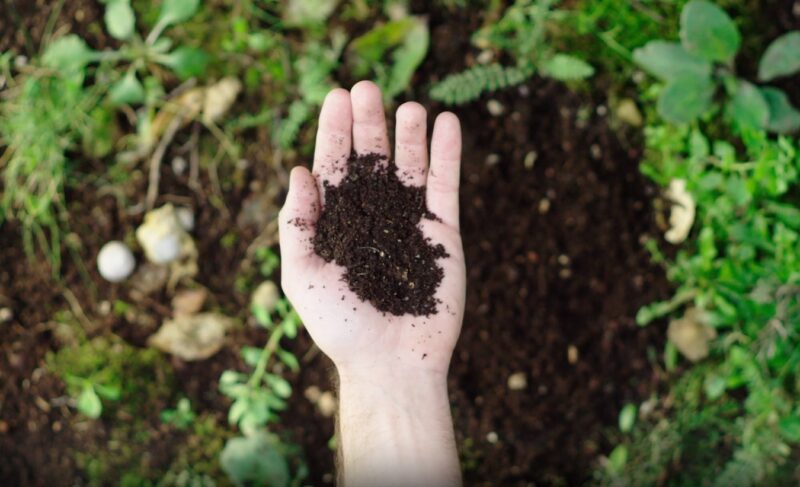Organic fertilizers are not just good for plants; they’re a boon for the soil and the environment. Here are the main benefits:
- Enhanced Soil Health: Organic fertilizers improve soil structure and increase its ability to hold water and nutrients.
- Environmental Safety: They reduce chemical runoff and leaching, protecting groundwater and wildlife.
- Nutrient Release: Organic fertilizers release nutrients slowly, providing a steady nutrient supply to plants.
Also, there is a way to make the whole process more affordable by making the fertilizer at home. This blog will share some valuable details about the different options available.
Composting
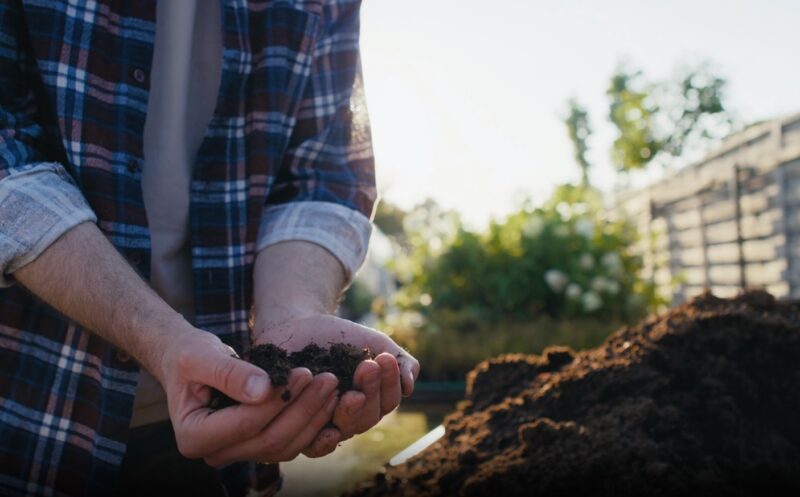
Composting is the cornerstone of organic gardening. It’s a simple process of decomposing organic matter to create a nutrient-rich fertilizer.
- Setting Up a Compost Bin: Start by choosing a suitable location for your compost bin or pile. It should be easily accessible and partially shaded.
- What to Compost: You can compost kitchen scraps (except meat and dairy), leaves, grass clippings, and even paper.
- The Composting Process: Layer your greens (kitchen scraps) and browns (leaves, paper), keeping the pile moist. Turn it regularly to aerate and speed up decomposition.
Vermicomposting
Vermicomposting uses worms to break down organic waste, resulting in high-quality compost.
- Setting Up a Worm Bin: A worm bin can be set up indoors or outdoors. Use a container with ventilation and bedding made of moist newspaper or cardboard.
- Feeding Your Worms: Feed worms fruit and vegetable scraps. Avoid meat, dairy, and oily foods.
- Harvesting Worm Castings: In about 3-4 months, you can harvest worm castings, a potent organic fertilizer.
Green Manures
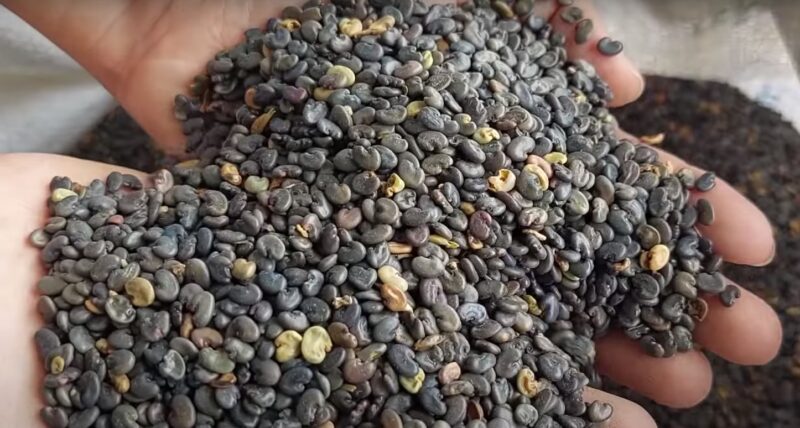
Green manures are crops grown to be plowed back into the soil, enriching it with organic matter and nutrients.
- Choosing Green Manure Crops: Legumes like clover and vetch, and grasses like rye, are excellent choices.
- Planting and Growing: Sow your green manure crop and allow it to grow. Don’t let it flower if you want to retain maximum nitrogen.
- Incorporating Into Soil: Once grown, cut down the plants and dig them into the soil. They will decompose and enrich the soil.
Seaweed and Fish Emulsions
Seaweed and fish emulsions are fantastic sources of nutrients, particularly trace elements often missing in soil.
- Seaweed: Collect seaweed, rinse off the salt, and let it decompose in a bucket of water.
- Fish Emulsion Preparation: Fish scraps can be blended with water and aged to create a nutrient-rich emulsion.
- Application Tips: These options are potent; dilute them well before applying to your plants.
Wood Ash and Eggshells
Wood ash and eggshells are excellent sources of calcium and potassium, essential for plant health.
- Wood Ash: Wood ash can be sprinkled directly into the soil but use it sparingly as it is alkaline.
- Eggshell: Dry and crush eggshells, then sprinkle them around your plants. They slowly release calcium, vital for plant growth.
Coffee Grounds and Banana Peels
Coffee grounds and banana peels are easily available kitchen scraps that are rich in nitrogen and potassium, respectively.
- Coffee Grounds: Spread used coffee grounds around your plants. They add nitrogen and improve soil texture and pH.
- Banana Peels: Bury banana peels in the soil near the roots of your plants for a potassium boost.
Brewing Compost Tea
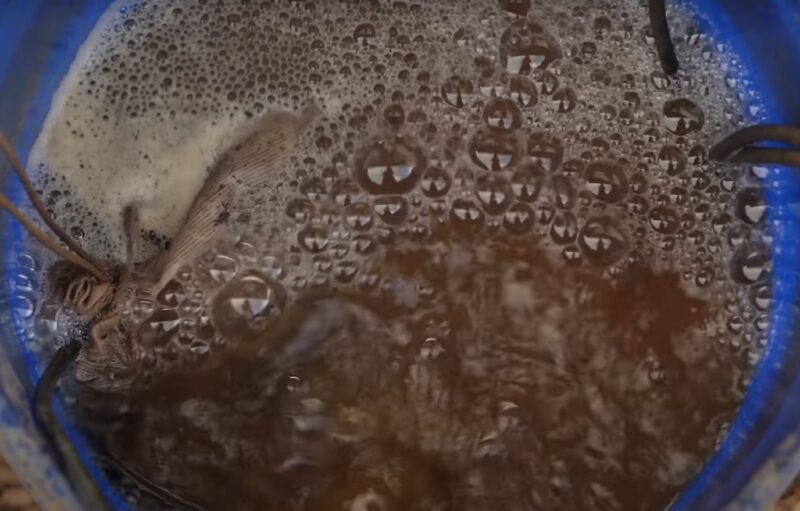
Compost tea is a liquid fertilizer made from steeping compost in water. It’s a powerful way to deliver nutrients to your plants.
- Ingredients: To make compost tea, you need well-decomposed compost, water, and an optional catalyst like molasses.
- Preparation: Mix compost with water and let it brew for a few days, stirring occasionally.
- Rich in Nutrients: Compost tea is teeming with beneficial microorganisms and nutrients.
- Application: Use it as a foliar spray or soil drench to boost plant health and disease resistance.
Balanced Fertilization
The N-P-K ratio(Nitrogen, Phosphorus, Potassium) is crucial for plant health. Organic fertilizers can be mixed to achieve the desired balance.
Crafting the Right Mix
- Analyzing Needs: Different plants require different N-P-K ratios. Understand your plant’s needs for optimal growth.
- Creating a Blend: Combine various organic materials like compost, bone meal, and wood ash to optimize N-P-K ratio.
Tips for Application
- Consistency: Apply your blended fertilizer consistently throughout the growing season.
- Observation: Watch your plants’ response and adjust the fertilizer blend as needed.
Seasonal Adjustments
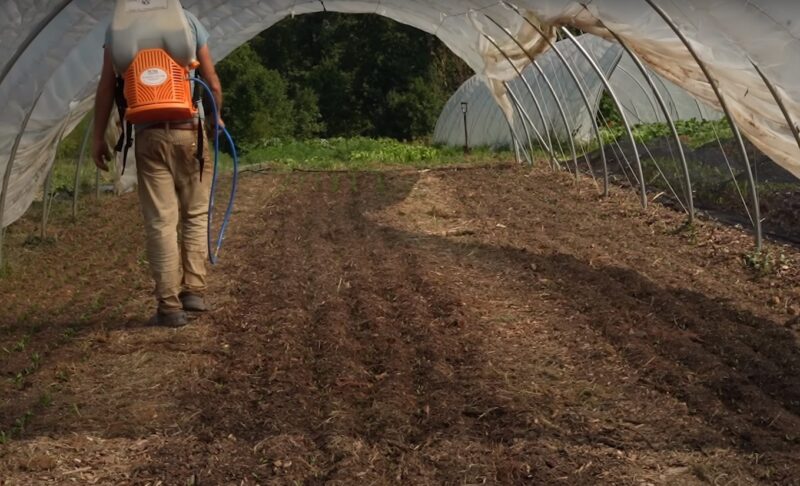
Plants have different nutritional needs throughout the year. Adjusting your organic fertilizer application accordingly can yield better results.
Spring and Summer
- Growth Boost: In spring, focus on nitrogen-rich fertilizers to support growth.
- Consistent Feeding: Throughout summer, provide balanced fertilization to sustain growth.
Fall and Winter
- Preparing for Dormancy: In fall, reduce nitrogen and increase potassium and phosphorus to prepare plants for winter.
- Winter Care: Most plants require little to no fertilizer in winter. Focus on maintaining soil health.
Environmental Considerations
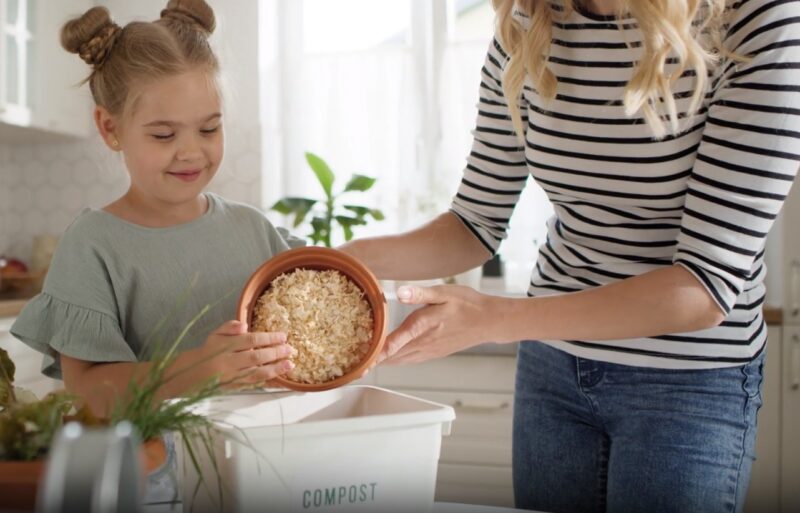
Using organic fertilizers is not just about feeding plants; it’s about environmental stewardship.
Positive Impact
- Ecosystem Health: Organic fertilizers support biodiversity and soil microbial life.
- Reduced Chemical Use: They help reduce reliance on chemical fertilizers, which can be harmful to the environment.
Best Practices
- Local Resources: Utilize local organic waste, reducing transportation and processing energy.
- Responsible Application: Avoid over-fertilization to prevent nutrient runoff and soil imbalance.
Additional DIY Solutions
1. Enhanced Compost Mix for General Use
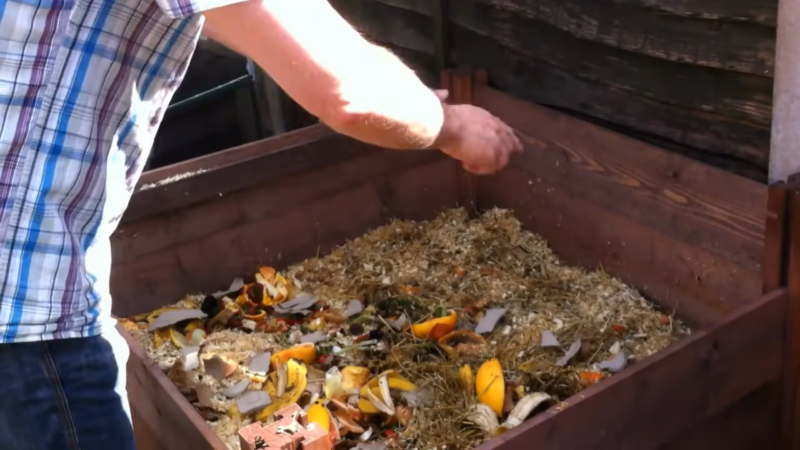
This all-purpose solution is perfect for most garden plants, providing a balanced mix of nutrients.
Ingredients:
- 4 parts compost: Acts as the base, rich in microorganisms and nutrients.
- 1 part bone meal: Adds phosphorus, essential for root development.
- 1 part kelp meal: Provides trace minerals and plant hormones.
Instructions:
- Mixing: Blend the ingredients in a large container or wheelbarrow.
- Curing: Allow the mixture to sit for a couple of weeks, stirring occasionally.
- Application: Apply a thin layer around the base of your plants every 4-6 weeks during the growing season.
2. High-Nitrogen for Leafy Growth
Ideal for leafy vegetables and plants that require extra nitrogen for growth.
Ingredients:
- 2 parts coffee grounds: A great nitrogen source.
- 2 parts compost: Provides a balanced mix of nutrients.
- 1 part dried blood meal: A concentrated nitrogen booster.
Instructions:
- Combine: Mix all ingredients thoroughly.
- Resting Period: Let the mixture sit for a week, stirring occasionally.
- Use: Apply to the soil at the base of plants, especially before high-growth periods.
3. Potassium-Rich for Flowering Plants
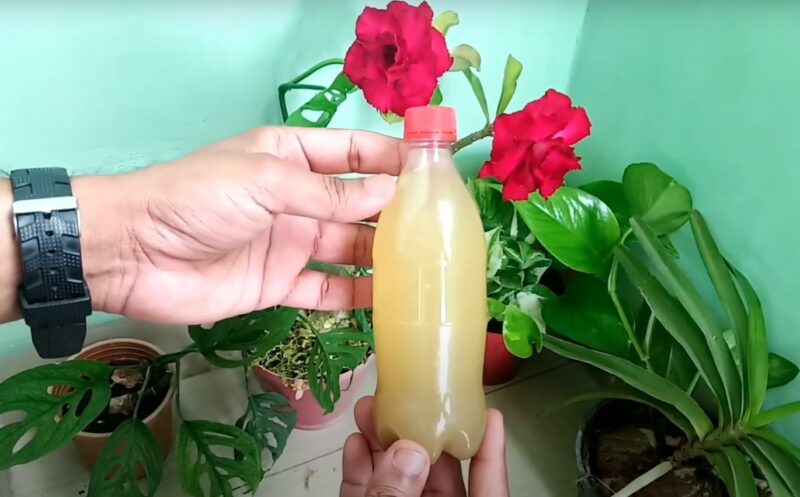
This blend is great for flowering plants and fruit trees, as potassium aids in flower and fruit development.
Ingredients:
- 3 parts wood ash: A good source of potassium and calcium.
- 2 parts compost: Balances the mix with a variety of nutrients.
- 1 part bone meal: Adds phosphorus, which works with potassium to support flowering.
Instructions:
- Mixing: Carefully mix the ingredients to avoid breathing in the fine particles.
- Settling: Let the mix settle for a few days in a covered bin.
- Application: Use sparingly around the base of flowering plants and fruit trees.
pH-Balancing Eggshells
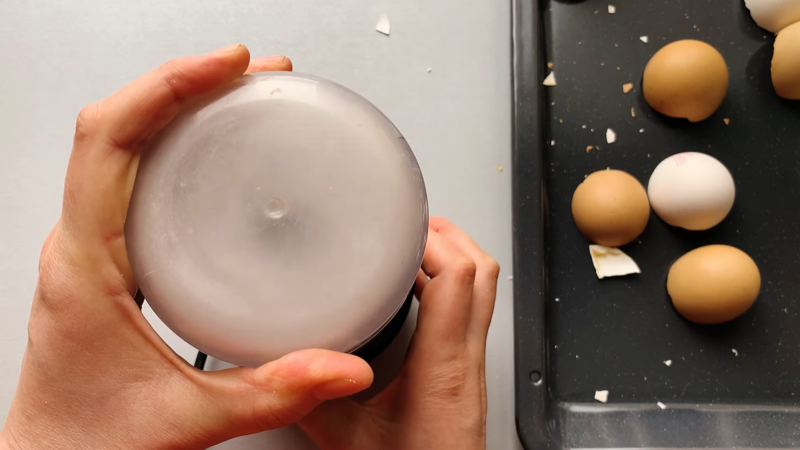
Excellent for plants that thrive in slightly alkaline soil, like cabbages and lilacs.
Ingredients:
- Eggshells, dried and crushed: Rich in calcium, which can help to moderate soil acidity.
- Compost: Adds general nutrients and organic matter.
Instructions:
- Preparation: Mix an equal amount of crushed eggshells and compost.
- Curing: Let the mixture sit for a few days.
- Usage: Apply around plants that prefer a higher pH.
| Fertilizer Type | Ingredients | Instructions |
|---|---|---|
| Enhanced Compost Mix | 4 parts compost, 1 part bone meal, 1 part kelp meal | Mix ingredients, cure for 2 weeks, apply every 4-6 weeks |
| High-Nitrogen | 2 parts coffee grounds, 2 parts compost, 1 part dried blood meal | Combine, let rest for 1 week, apply before growth periods |
| Potassium-Rich | 3 parts wood ash, 2 parts compost, 1 part bone meal | Mix carefully, let settle for a few days, use around flowering plants |
| pH-Balancing Eggshells | Eggshells (dried & crushed), Compost | Mix equal parts, let sit for a few days, apply to alkaline-loving plants |
FAQs
Can I use organic fertilizers on indoor plants as well as outdoor gardens?
Absolutely! Organic fertilizers are great for both indoor and outdoor plants. For indoor plants, it’s important to use well-composted materials to avoid any odors or pests. Liquid fertilizers like diluted compost tea are particularly easy to use for houseplants.
How do I know if my compost is ready to use as fertilizer?
Compost is ready when it’s dark, crumbly, and has an earthy smell. It should no longer have recognizable food or garden waste in it. This process usually takes 3-6 months, depending on factors like temperature and composition.
Is there a risk of pathogens in homemade organic fertilizers?
Properly prepared and well-composted organic fertilizers have a low risk of pathogens. However, it’s important to avoid using meat, dairy, or pet wastes in your compost to minimize any risk. Also, allowing the compost to fully mature and maintaining a good temperature during the composting process helps kill off harmful pathogens.
Can I use weeds as a component in my organic fertilizers?
Yes, weeds can be used, but with caution. Make sure they haven’t gone to seed, as composting may not always destroy seeds and could lead to weeds spreading in your garden. Also, avoid weeds that are heavily diseased.
How often should I apply organic fertilizer to my garden?
This depends on the type of fertilizer and the needs of your specific plants. A general rule is to apply solid compost-based fertilizers a few times during the growing season, while liquid fertilizers like compost tea can be used more frequently, even every 2-4 weeks.
Are there any plants that don’t respond well to homemade organic fertilizers?
Most plants thrive on organic fertilizers, but some, like acid-loving plants (e.g., azaleas, blueberries), may need specific adjustments in pH that organic materials can’t always provide. Additionally, plants with very specific nutrient requirements might need targeted fertilizers beyond what general compost can offer.
Summary
Making your own organic fertilizers is a rewarding and environmentally-friendly practice. By using kitchen scraps, yard waste, and even worms, you can create a range of fertilizers tailored to the needs of your garden.
Whether through composting, vermicomposting, or using everyday items like coffee grounds and eggshells, the journey towards sustainable gardening starts in your own backyard.
